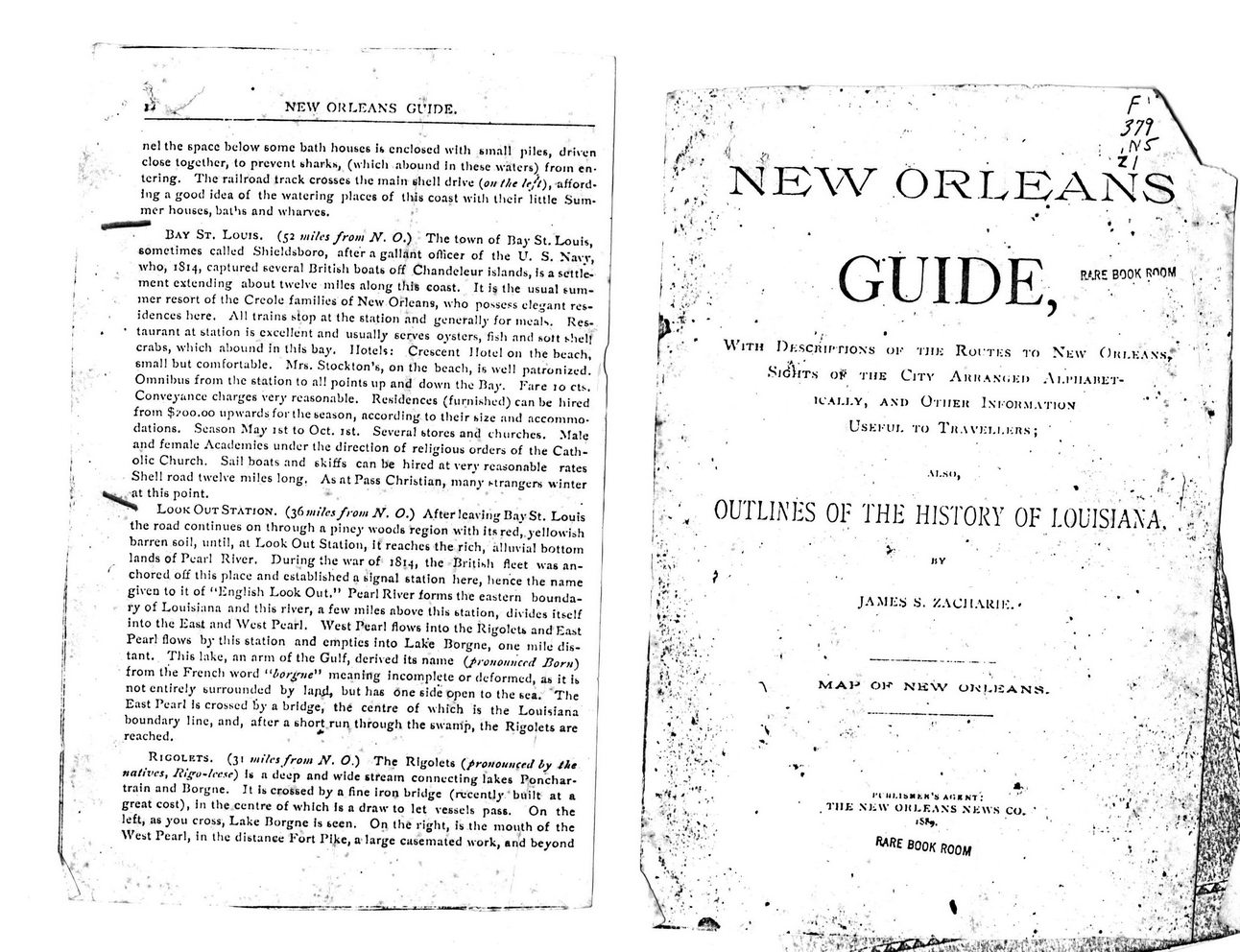This text was obtained via automated optical character recognition.
It has not been edited and may therefore contain several errors.
.
NEW OK LEANS Gl'IDE.
nel the 6pace below some batli houses is enclosed with small piles, driven close together, to prevent sharks, (which abound In these waters) from entering. The railroad track crosses the main shell drive {on the left), afford* lug a good idea of the watering places of this coast with their little Summer houses, baths and wharves.
Bay St. Louis. (52 miles from N. O.) The town of Bay St. Louis, sometimes called Shieldsboro, after a gallant officer of the U. S. Navv, who, 1S14, captured several British boats off Chandeleur islands, Is a settlement extending about twelve miles along this coast. It is the usual summer resort of the Creole families of New Orleans, who possess elegant residences here. All trains stop at the station and generally for meals. Restaurant at station is excellent and usually 6erves oysters, fish and sort shell crabs, which abound in this bay. Hotels: Crescent Hotel on the beach,
small but comfortable. Mrs. Stockton's, on the beach, is well patronized. Omnibus from the station to all points up and down the Bay. I-'are 10 cts. Conveyance charges very reasonable. Residences (furnished) can be hired from $;>oo.oo upwards for the season, according to their size and accommodations. Season May 1st to Oct. 1st. Several stores and churches. Male and female Academies under the direction of religious orders of the Catholic Church. Sail boats and 6kiffs can be hired at very reasonable rates Shell road twelve miles long, As at Pass Christian, many strangers winter at this point.
Look Out Station. (36 miles from NO.) After leaving Bay St. Louis the road continues on through a piney woods region with its red, yellowish barren soil, until, at Look Out Station, It reaches the rich, alluvial bottom lands of Pearl River. During the war of 1814, the British fleet was anchored off this place and established a signal station here, hence the name given to it of “English Look Out." Pearl River forms the eastern boundary of Louisiana and this river, a few miles above this station, divides itself into the East and West Pearl. West Pearl flows Into the Rigolets and Ea^t Pearl flows by this station and empties into Lake Borgne, one mile distant. This lake, an arm of the Gulf, derived Its name {pronounced Jiorn) from the French word "borgne" meaning incomplete or deformed, as it is not entirely surrounded by lajyl, but has one 6ide open to the sea. The East Pearl Is crossed by a bridge, the centre of which is the Louisiana boundary line, and, after a short run through the swamp, the Rigolets are reached.
Rigolets. (31 miles from N. O.) The Rigolets {pronounced by th* natives, Iti'gu-leese) Is a deep and wide stream connecting lakes Ponchar-train and Borgne. It is crossed by a fine iron bridge (recently built at a great cost), in the centre of which Is a draw to let vessels pass. On the left, a6 you cross, Lake Borgne is seen. On the right, is the mouth of the West Pearl, in the distance l'ort Pike, a large cusemated work, and beyond
»v
* r.»
* i •
F''
371 ,/vr z/
NEW ORLEANS
GUIDE,
R*.RE BOOK R^OM
With Dksckip tjons ok tjik Romes to N’i-w Oim.kans*' SidVrrs oif the City Ahiiani.kd Am'Haiiet-
*
1CAJ.1.Y, AND OtIIEH IX I'Olt M ATION ' ■
UsKKllJ. TO Tit A VKI.I.KItS ; '
OUTLINES OF THE HISTORY OF LOUISIANA.
t; >
I •'? 5.' .
' I _ / ;
♦ f. v.,
I- r.t\# t
\ *y • fi
; .
•* <
'V-- '
. V-
JAMES S. ZACHAIUK.-
MAH OK XfcCW UKUiANS.
rilll.IbMKN'SADRKT;
THE MiW OKLEANS XKWS CO. •S*f.
RARE book room
s
-V •
..

BSL 1880 To 1899 New-Orleans-Guide-BSL-Papa